Peugeot Rifter vs Renault Kangoo – Which model is better for everyday use?
Everyday use, family trips or long-distance drives – here’s where the differences show.
Discover whether Peugeot Rifter or Renault Kangoo fits your lifestyle better.
Introduction: Peugeot Rifter vs Renault Kangoo
The automotive market has seen a significant rise in the popularity of high-roof wagons, catering to both personal and commercial use. Among the notable contenders in this segment are the Peugeot Rifter and the Renault Kangoo. These two vehicles bring to the table distinct attributes, from engine options to innovative features. In this article, we will delve into a comprehensive comparison of these two formidable models, highlighting their technical specifications, innovations, and overall performance.
Design and Comfort
Both the Peugeot Rifter and Renault Kangoo boast a practical design that emphasizes spaciousness and functionality. The Rifter measures 4,405 mm in length, while the Kangoo, slightly longer at 4,911 mm, offers a more extended cabin space. In terms of height, the Kangoo is marginally taller at 1,869 mm compared to the Rifter's 1,818 mm, providing a superior headroom experience.
In terms of seating capacity, both models offer configurations for up to seven passengers, making them suitable for family use. Moreover, both the Rifter and Kangoo prioritize cargo space, with the Rifter providing a trunk capacity of up to 1,050 liters, while the Kangoo maximizes its cargo area with a generous 950 liters.
Engine Choices and Performance
The engine options available in these vehicles cater to a variety of driver preferences. The Peugeot Rifter is available with a choice of electric, petrol, and diesel engines, with power outputs ranging from 102 to 136 HP. Its 1,199 cm³ petrol engine can accelerate from 0 to 100 km/h in 11.5 seconds, while the diesel variant emphasizes efficiency with a consumption of just 5.4 L/100 km.
On the other hand, the Renault Kangoo offers a range of diesel and petrol engines with power figures between 95 and 130 HP. The Kangoo's efficient 1,461 cm³ engine impresses with a fuel consumption rating of 5.3 L/100 km, although its acceleration can be a bit sluggish, reaching 0-100 km/h in about 15.6 seconds with the base model.
Innovations and Technology
Both models come equipped with technological advancements aimed at enhancing safety and driving experience. The Peugeot Rifter features advanced driver assistance systems such as lane departure warning and adaptive cruise control, providing a layer of safety on long journeys. The interior is also designed for modern connectivity, featuring touchscreen interfaces and smartphone integration.
The Renault Kangoo, while also well-versed in technology, stands out with its practical focus. It offers a unique 'Easy Link' multimedia system, allowing for seamless connectivity and navigation. Additionally, the Kangoo includes safety features like automatic emergency braking and parking assist, aimed at easing urban driving experiences.
Electric Options: A Sustainable Future
As the automotive industry moves towards greener energy solutions, both the Rifter and Kangoo have made strides in the electric vehicle space. The Peugeot Rifter offers an impressive electric range of up to 340 km, making it suitable for everyday use without the constant need for recharging. It consumes 19.1 kWh/100 km, highlighting its efficiency as an electric vehicle.
Conversely, the Kangoo provides a slightly lower electric range of 285 km with a consumption of 20.2 kWh/100 km. While both models present viable electric alternatives, the Rifter slightly outshines the Kangoo in range and efficiency.
Conclusion: Which High-Roof Wagon Wins?
Choosing between the Peugeot Rifter and Renault Kangoo largely depends on individual needs and preferences. The Rifter offers superior engine performance, innovative tech, and a greater electric range, making it an excellent choice for the future-oriented driver. Conversely, the Kangoo excels in practicality and space, making it a reliable choice for users with significant loading needs.
Ultimately, both vehicles bring forth their unique strengths, contributing to a competitive market that caters to diverse customer requirements. Whether it is the Rifter or the Kangoo, prospective buyers will find functional and well-designed vehicles in either option.
Here’s where it gets real: The technical differences in detail
Costs and Efficiency:
Price and efficiency are often the first things buyers look at. Here it becomes clear which model has the long-term edge – whether at the pump, the plug, or in purchase price.
Renault Kangoo has a hardly perceptible advantage in terms of price – it starts at 23100 £, while the Peugeot Rifter costs 23800 £. That’s a price difference of around 763 £.
Fuel consumption also shows a difference: Renault Kangoo manages with 5.20 L and is therefore barely noticeable more efficient than the Peugeot Rifter with 5.60 L. The difference is about 0.40 L per 100 km.
In terms of energy consumption, the advantage goes to the Peugeot Rifter: with 18.30 kWh per 100 km, it’s a bit more efficient than the Renault Kangoo with 20.20 kWh. That’s a difference of about 1.90 kWh.
As for range, the Peugeot Rifter performs slightly better – achieving up to 339 km, about 54 km more than the Renault Kangoo.
Engine and Performance:
Power, torque and acceleration are the classic benchmarks for car enthusiasts – and here, some clear differences start to show.
When it comes to engine power, the Peugeot Rifter has a minimal edge – offering 136 HP compared to 130 HP. That’s roughly 6 HP more horsepower.
In acceleration from 0 to 100 km/h, the Peugeot Rifter is slight quicker – completing the sprint in 10.80 s, while the Renault Kangoo takes 11.60 s. That’s about 0.80 s faster.
There’s no difference in top speed – both reach 184 km/h.
There’s also a difference in torque: Peugeot Rifter pulls hardly perceptible stronger with 300 Nm compared to 270 Nm. That’s about 30 Nm difference.
Space and Everyday Use:
Whether family car or daily driver – which one offers more room, flexibility and comfort?
Both vehicles offer seating for 7 people.
In curb weight, Peugeot Rifter is slight lighter – 1561 kg compared to 1585 kg. The difference is around 24 kg.
In terms of boot space, the Peugeot Rifter offers minimal more room – 1050 L compared to 950 L. That’s a difference of about 100 L.
In maximum load capacity, the Peugeot Rifter performs to a small extent better – up to 3500 L, which is about 450 L more than the Renault Kangoo.
When it comes to payload, Peugeot Rifter distinct takes the win – 814 kg compared to 609 kg. That’s a difference of about 205 kg.
Who wins the race?
The Peugeot Rifter proves to be is largely superior and therefore becomes our DriveDuel Champion!
Peugeot Rifter is the better all-rounder in this comparison.
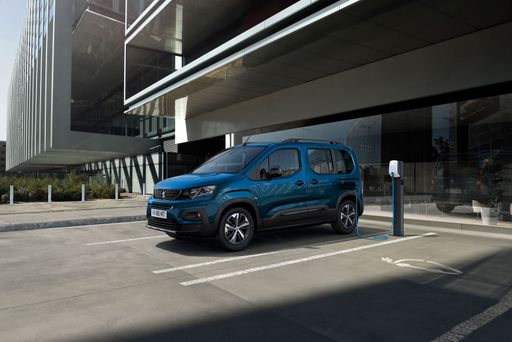 @ Peugeot / Stellantis Media
@ Peugeot / Stellantis Media
Peugeot Rifter
Peugeot Rifter
Der Peugeot Rifter beeindruckt mit seinem robusten Design und seiner hohen Vielseitigkeit, die ihn ideal für Familien und Outdoor-Abenteuer macht. Der Innenraum ist geräumig gestaltet und bietet zahlreiche innovative Technologien, die den Komfort und die Sicherheit der Insassen erhöhen. Zudem überzeugt der Rifter mit seiner hervorragenden Fahrdynamik, die sowohl in der Stadt als auch auf längeren Strecken für ein angenehmes Fahrerlebnis sorgt.
details @ Peugeot / Stellantis Media
@ Peugeot / Stellantis Media
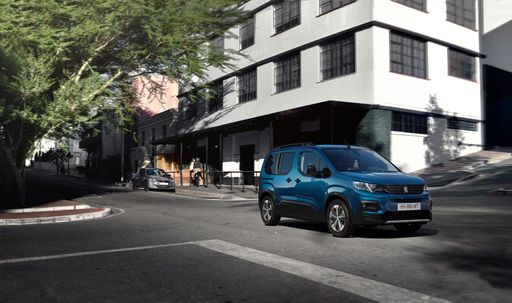 @ Peugeot / Stellantis Media
@ Peugeot / Stellantis Media
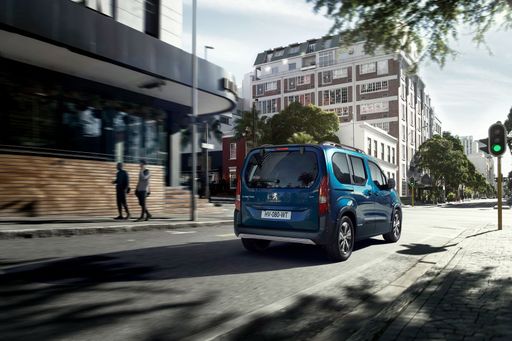 @ Peugeot / Stellantis Media
@ Peugeot / Stellantis Media
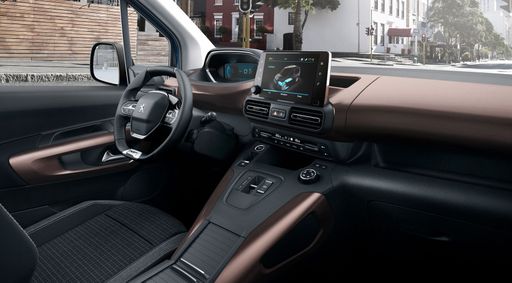 @ Peugeot / Stellantis Media
@ Peugeot / Stellantis Media
Renault Kangoo
The Renault Kangoo high-roof van delivers a practical and versatile solution for both family and commercial use, with its spacious interior and adaptable seating arrangements. Its modern design and user-friendly features provide comfort and convenience, making it an appealing option for those needing a reliable workhorse. Additionally, the efficient engine options ensure a balanced approach to performance, keeping running costs manageable for everyday driving.
details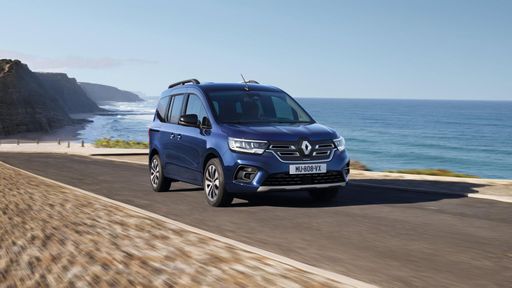 @ Renault Group Media
@ Renault Group Media
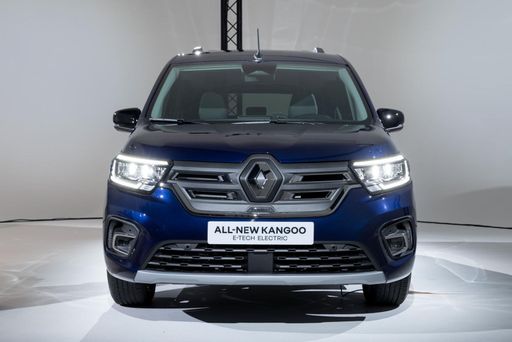 @ Renault Group Media
@ Renault Group Media
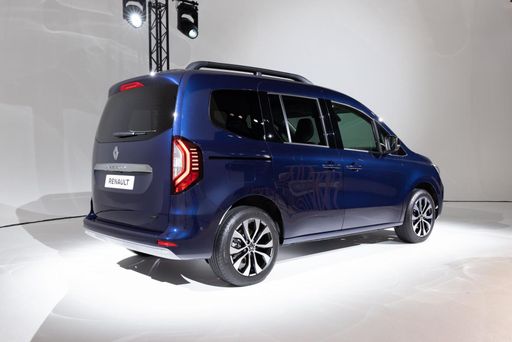 @ Renault Group Media
@ Renault Group Media
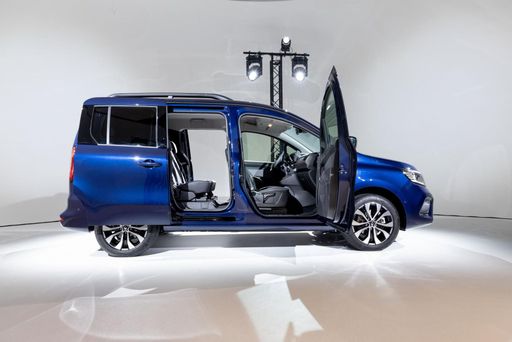 @ Renault Group Media
@ Renault Group Media
 @ Renault Group Media
@ Renault Group Media
 @ Renault Group Media
@ Renault Group Media
 @ Peugeot / Stellantis Media
@ Peugeot / Stellantis Media
|
 @ Renault Group Media
@ Renault Group Media
|
|
|
|
Costs and Consumption |
|
|---|---|
|
Price
23800 - 36600 £
|
Price
23100 - 36200 £
|
|
Consumption L/100km
5.6 - 6 L
|
Consumption L/100km
5.2 - 7.1 L
|
|
Consumption kWh/100km
18.3 - 19.1 kWh
|
Consumption kWh/100km
20.2 - 21.5 kWh
|
|
Electric Range
328 - 339 km
|
Electric Range
278 - 285 km
|
|
Battery Capacity
-
|
Battery Capacity
-
|
|
co2
0 - 158 g/km
|
co2
0 - 161 g/km
|
|
Fuel tank capacity
50 L
|
Fuel tank capacity
54 L
|
Dimensions and Body |
|
|---|---|
|
Body Type
High Roof Estate
|
Body Type
High Roof Estate
|
|
Seats
5 - 7
|
Seats
5 - 7
|
|
Doors
4 - 5
|
Doors
5
|
|
Curb weight
1561 - 1941 kg
|
Curb weight
1585 - 2041 kg
|
|
Trunk capacity
322 - 1050 L
|
Trunk capacity
500 - 950 L
|
|
Length
4405 - 4755 mm
|
Length
4486 - 4911 mm
|
|
Width
1848 mm
|
Width
1860 - 1919 mm
|
|
Height
1818 - 1837 mm
|
Height
1838 - 1869 mm
|
|
Max trunk capacity
3000 - 3500 L
|
Max trunk capacity
1296 - 3050 L
|
|
Payload
489 - 814 kg
|
Payload
400 - 609 kg
|
Engine and Performance |
|
|---|---|
|
Engine Type
Electric, Diesel
|
Engine Type
Diesel, Petrol, Electric
|
|
Transmission
Automatic, Manuel
|
Transmission
Manuel, Automatic
|
|
Transmission Detail
Reduction Gearbox, Manual Gearbox, Automatic Gearbox
|
Transmission Detail
Manual Gearbox, Dual-Clutch Automatic, Reduction Gearbox
|
|
Drive Type
Front-Wheel Drive
|
Drive Type
Front-Wheel Drive
|
|
Power HP
102 - 136 HP
|
Power HP
95 - 130 HP
|
|
Acceleration 0-100km/h
10.8 - 13.6 s
|
Acceleration 0-100km/h
11.6 - 15.6 s
|
|
Max Speed
132 - 184 km/h
|
Max Speed
130 - 184 km/h
|
|
Torque
250 - 300 Nm
|
Torque
200 - 270 Nm
|
|
Number of Cylinders
4
|
Number of Cylinders
4
|
|
Power kW
75 - 100 kW
|
Power kW
70 - 96 kW
|
|
Engine capacity
1499 cm3
|
Engine capacity
1332 - 1461 cm3
|
General |
|
|---|---|
|
Model Year
2024
|
Model Year
2022 - 2024
|
|
CO2 Efficiency Class
A, E, F
|
CO2 Efficiency Class
E, F, D, A
|
|
Brand
Peugeot
|
Brand
Renault
|
What drivetrain options does the Peugeot Rifter have?
The Peugeot Rifter is offered with Front-Wheel Drive.
The prices and data displayed are estimates based on German list prices and may vary by country. This information is not legally binding.
